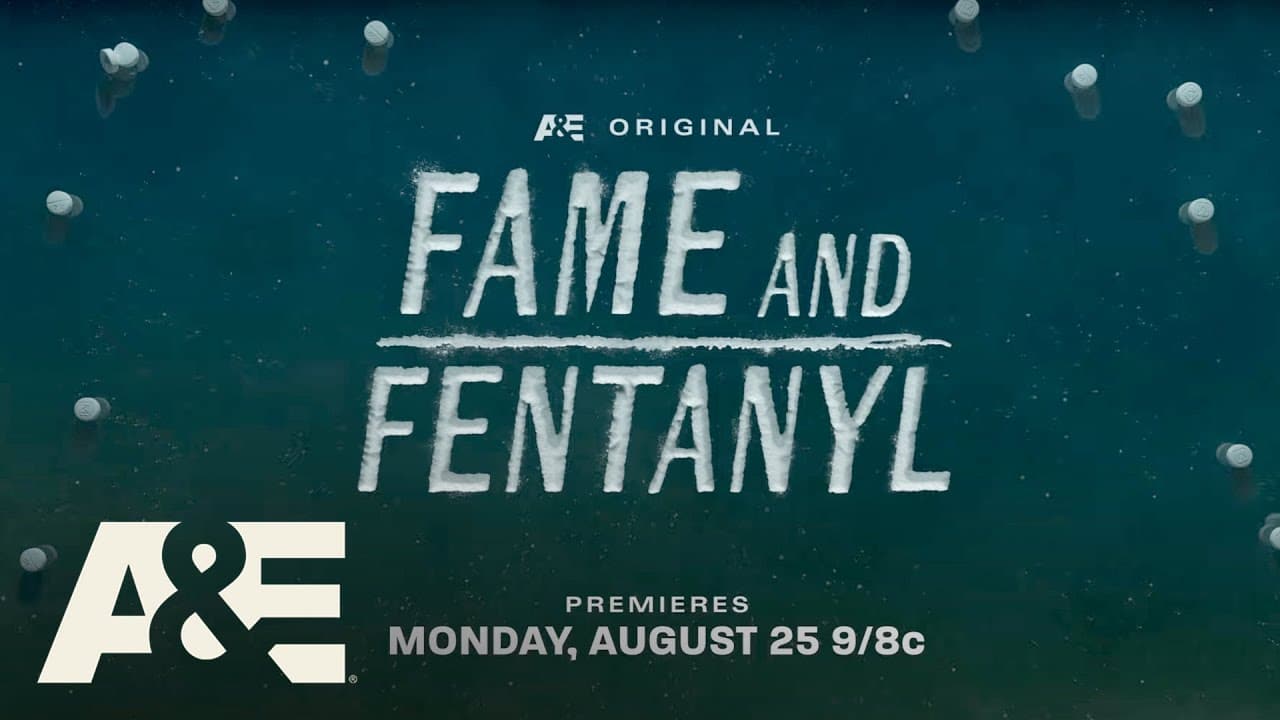
The link between fame and fentanyl is a tragic and powerful one, reminding us all that addiction and accidental poisoning don’t care about status. When we lose public figures, it puts a spotlight on a crisis that has been devastating communities for years, showing how the unique pressures of a public life can collide with an increasingly toxic drug supply.
This isn’t about sensationalism. It’s about looking at the human stories behind the headlines to understand a public health emergency that affects everyone.
The Hidden Epidemic Claiming Our Idols
The fentanyl crisis has cast a long, dark shadow over our culture. The numbers are staggering—more than 70 thousand Americans die from fentanyl poisoning every single year. But behind that number are real people, from small-town families to the brightest stars in Hollywood.
When we hear about figures like Prince, Tom Petty, Michael K. Williams, or Angus Cloud dying from fentanyl, their stories become very public, very painful tragedies. These losses are a brutal wake-up call. They force a national conversation about the intense pressures that come with fame, but more than that, they show just how easy it is for anyone to become a victim.
Often, fentanyl is hidden in plain sight, pressed into pills that look like legitimate prescriptions or mixed into other street drugs. People frequently have no idea they’re even taking it.
A Crisis Without Prejudice
The tragic stories of celebrities and fentanyl drive home a crucial truth: addiction is a disease, not a moral failing. It hits people from every walk of life, no matter their income, background, or level of success.
It’s a point powerfully made in a recent two-hour special hosted by Ice T, which takes an unflinching look at the fentanyl crisis and its profound impact on our society and culture. The special shares the horrific toll and heartbreaking stories of those directly affected by the deadly substance, from high-profile artists to families from all walks of life.
To get a clearer picture of just how widespread this issue is, it helps to see the data in one place.
Fentanyl’s Impact at a Glance
This table provides a snapshot of the key statistics that define the fentanyl crisis in America, offering a quick overview of the epidemic’s staggering scale.
| Key Statistic | What It Means for Public Health |
|---|---|
| Over 70,000 deaths annually from synthetic opioids like fentanyl. | This is now the leading cause of death for Americans aged 18-45. |
| 50 to 100 times more potent than morphine. | A tiny, almost invisible amount—just two milligrams—can be lethal. |
| 6 out of 10 fake prescription pills tested by the DEA contain a potentially lethal dose of fentanyl. | The drug supply is dangerously contaminated, making any non-prescribed pill a gamble. |
| Fentanyl is involved in more deaths of Americans under 50 than any other cause, including heart disease, cancer, and car accidents. | This is a public health crisis on an unprecedented scale, impacting generations. |
These numbers aren't just abstract figures; they represent lives, families, and communities torn apart by a substance that is both incredibly powerful and deceptively hidden.
By understanding the connection between celebrity struggles and the broader crisis, we can start to break down the stigma that keeps so many people from asking for help. It’s about seeing the shared humanity behind the headlines and building a culture where reaching out is a sign of strength.
If anyone is struggling with addiction, you can call Addiction Helpline America 24/7 at 844-561-0606 for confidential support.
Call Now – Your Journey to Recovery Begins Today!

Take the first step towards a healthier life! Call now to connect with our compassionate team and start your recovery journey today. Your path to healing awaits!
Our recovery specialists are available 24/7 to provide support, and all calls are confidential and free. Reach out anytime – we’re here to help!
Understanding Fentanyl and Its Lethal Power
To really wrap your head around the fentanyl crisis, you first have to grasp just how potent this substance is. Fentanyl isn’t a typical street drug; it started as a synthetic opioid developed for managing extreme pain, usually for cancer patients or after major surgery. But the very thing that makes it effective in a hospital—its incredible strength—makes it deadly on the street.
Let’s try to put that strength into perspective. Imagine morphine is like a handgun. If that’s the case, fentanyl is a cannon. It’s up to 50 times stronger than heroin and a staggering 100 times stronger than morphine. This means a lethal dose is terrifyingly small, about the size of a few grains of sand.
The Hidden Danger in Other Drugs
What makes this situation even more dangerous is how fentanyl is secretly mixed into other drugs. Illicit drug producers use it as a cheap, powerful filler, adding it to everything from heroin and cocaine to methamphetamine. They do this to hook users faster and cut costs.
Worse yet, fentanyl is often pressed into counterfeit pills that look identical to real prescription medications like OxyContin, Vicodin, or even Xanax. Someone might buy what they think is a familiar pill from a trusted source, only to unknowingly ingest a fatal dose of fentanyl. This is a huge part of the fame and fentanyl connection—what seems like casual or experimental drug use can turn deadly in an instant.
The following image shows how high-profile cases, the influence of social media, and the tragic death toll are all tangled together in this crisis.
As you can see, when a celebrity overdose hits the news, it shines a massive spotlight on the issue. At the same time, social media can be a double-edged sword, sometimes spreading life-saving awareness but also creating a space where misinformation and access to dangerous drugs can thrive. All of this contributes to the heartbreaking number of deaths we see each year.
Its Devastating Impact on the Body
Once fentanyl gets into the bloodstream, it races to the brain and latches onto the opioid receptors—the same parts that control pain and emotions. This triggers a powerful wave of euphoria, but at a catastrophic cost: it also slams the brakes on your respiratory system.
A high dose can slow a person’s breathing to a crawl or stop it completely. Without oxygen, the brain begins to shut down, leading to irreversible damage or death in just a few minutes. Because it acts so fast, there’s often no time for anyone to step in and help.
"In the United States, synthetic opioids, primarily fentanyl, have played a dominant role in the drug overdose crisis for several years. Provisional data for 2023 estimated approximately 105,303 drug overdose deaths nationwide, with two-thirds of them involving synthetic opioids like fentanyl. Discover more about these shocking statistics on OverdoseDay.com."
The sheer scale of this crisis is immense, and it’s prompted a massive public health response. Knowing how this substance works is the first step toward protecting yourself and the people you care about. For those already caught in this struggle, specialized help is available. There are dedicated rehab centers for opioid addiction that offer a real path forward. In this fight, knowledge and support are truly the most powerful tools we have.
Call Now – Your Journey to Recovery Begins Today!

Take the first step towards a healthier life! Call now to connect with our compassionate team and start your recovery journey today. Your path to healing awaits!
Our recovery specialists are available 24/7 to provide support, and all calls are confidential and free. Reach out anytime – we’re here to help!
Celebrity Deaths: A Sobering Reality Check
When a celebrity we admire dies from a drug overdose, the news hits hard. It’s more than just a headline; it’s a powerful, public window into a struggle that’s usually deeply private. These stories serve as a sobering reality check, making the abstract danger of fentanyl feel terrifyingly real.
Suddenly, a conversation starts. The loss of an icon forces us all to confront the hidden dangers of a contaminated drug supply. These tragedies show how different paths—managing chronic pain, dealing with the immense pressure of fame, or even just recreational use—can all lead to the same fatal outcome when fentanyl is in the mix. The connection between fame and fentanyl becomes a cautionary tale for everyone.
The Unseen Threat: Counterfeit Pills
One of the most frightening parts of this crisis is the role of counterfeit pills. Many victims, including these high-profile artists, weren’t looking for fentanyl at all. They thought they were taking a legitimate prescription painkiller or another street drug, but they were poisoned.
- Prince: The legendary musician died from an accidental overdose after taking counterfeit Vicodin pills. He was trying to manage severe hip pain, but the pills were secretly laced with a lethal dose of fentanyl.
- Tom Petty: The rock icon’s death was caused by an accidental overdose from a mix of drugs, with fentanyl being a major factor. He was using several medications to cope with the pain from a fractured hip and other health problems so he could keep performing for his fans.
- Michael K. Williams: The acclaimed actor known for his role in “The Wire” died from an acute intoxication due to a lethal combination of fentanyl, heroin, and cocaine, highlighting the dangerous mix of substances on the street.
- Angus Cloud: The young “Euphoria” star’s death was attributed to an accidental overdose involving a lethal mix of fentanyl, cocaine, and other substances, a tragic reminder of the dangers facing a new generation.
There’s a clear and heartbreaking pattern here. These individuals had no idea they were consuming a substance powerful enough to kill them instantly.
When Pain Management Turns Deadly
For so many, the journey doesn’t start with addiction but with a genuine need for pain relief. Living with chronic pain is exhausting, and for a public figure, the pressure to perform while suffering is almost unimaginable. This was a key part of the story for both Prince and Tom Petty, who relied on powerful painkillers to continue touring and making music.
Their stories expose a critical vulnerability in the system. When someone can’t get the relief they need through a doctor, they might turn to the black market, thinking they’re buying the same medication. But that market is a minefield, flooded with fake pills packed with deadly amounts of fentanyl.
"The heartbreaking reality is that a single counterfeit pill can be enough to end a life. The user believes they are managing pain, but they are unknowingly playing a game of Russian roulette with a contaminated drug supply."
The pressures of fame can also lead people to self-medicate for anxiety, depression, or simply the desire to escape the spotlight. The story of Loni Willison’s struggles with addiction is a stark reminder of how quickly a public life can unravel under such intense strain.
What these high-profile losses teach us is that fentanyl doesn’t care who you are. It preys on vulnerability—whether that comes from chronic pain, a mental health battle, or a moment of recreational use. These aren’t just distant Hollywood tragedies; they are deeply human stories that mirror a crisis unfolding in communities everywhere.
Beyond the Headlines: The Crisis in Our Communities
When a celebrity overdose makes the news, it’s a tragedy that captures the world’s attention. But those high-profile stories of fame and fentanyl are just the tip of the iceberg. The reality is, this isn’t some distant “Hollywood problem”—it’s a crisis tearing apart families in every single community across the country.
The true scale of this epidemic isn’t measured in headlines, but in the quiet, heartbreaking loss of our parents, children, and friends. As cultural figures like Ice T have brought to light, the toll is staggering far beyond the red carpet. Fentanyl poisoning is now a leading cause of death for young and middle-aged Americans, wiping out entire futures and leaving behind a wake of grief that’s hard to comprehend.
An Epidemic in Every Neighborhood
The fentanyl crisis isn’t driven by fame or fortune. It’s fueled by a complicated web of social and economic issues that have taken root in our own backyards. It finds fertile ground in communities grappling with unemployment, a lack of access to mental healthcare, and a shortage of real resources for addiction treatment.
In so many places, people turn to substances to quiet the noise of trauma, chronic pain, or just sheer despair. They think they’re getting one thing, only to find themselves face-to-face with a dangerously unpredictable drug supply. A single counterfeit pill, bought for what seems like a harmless reason, can be a death sentence. This is the silent reality playing out every single day.
"The loss of human potential is staggering. Every person lost to fentanyl poisoning is a future left unwritten—a sibling, a parent, a friend, or a coworker whose absence creates a void that can never be filled."
This visualization drives home just how dire the situation has become. It’s not a gradual increase; it’s an explosion in overdose deaths, largely driven by synthetic opioids like fentanyl.
The chart makes it painfully clear: this crisis has accelerated at an alarming rate in recent years. This isn’t just a trend; it’s a full-blown public health emergency that demands our immediate attention.
A Global Fight with Local Consequences
While this feels like a uniquely American problem, it’s not. The devastation is being felt worldwide, forcing international health organizations to sound the alarm and take action.
The global opioid overdose crisis, now supercharged by synthetic opioids, was responsible for an estimated 125,000 deaths in 2019 alone. Those numbers paint a grim picture of widespread opioid misuse around the world, with fentanyl’s extreme potency making it especially deadly. In response, international bodies have moved to place several fentanyl analogues under stricter control. You can dig deeper into these global health initiatives and read the findings from the World Health Organization.
Looking at it from this international perspective highlights a crucial point. The stories of fame and fentanyl are tragic, yes, but this crisis is a deeply human one that doesn’t care about borders or status. The heartbreaking stories of families losing the people they love are universal, connecting all of us in the urgent need for awareness, compassion, and action.
If you or someone you know is struggling, please know you are not alone. Help is available right now, 24/7. Call Addiction Helpline America at 844-561-0606 to speak with someone who understands and can guide you toward recovery.
Recognizing the Warning Signs of Opioid Misuse
Knowing what to look for can be the first step in saving someone’s life. When a person you care about is struggling with opioid misuse, the signs might start small, almost unnoticeably. But over time, a pattern often emerges.
Understanding these changes is crucial. Spotting them early gives you the best chance to step in and guide them toward help.
The headlines about fame and fentanyl usually focus on the tragic end, but the story always starts much earlier with warning signs that were missed or misunderstood. Arming yourself with knowledge is the first step in turning concern into real, constructive action.
Key Physical Indicators
Some of the most obvious signs of opioid misuse are physical. These changes are a direct result of how opioids, especially potent ones like fentanyl, impact the central nervous system by slowing everything down.
Keep an eye out for these physical red flags:
- Extreme drowsiness or “nodding off” at strange times, like in the middle of a conversation or a meal.
- Tiny, constricted “pinpoint” pupils that don’t seem to respond to light.
- Slowed or shallow breathing. This is one of the most dangerous signs and a direct precursor to an overdose.
- Confusion, slurred speech, or poor coordination, almost like they’re heavily drunk.
These aren’t just signs of being tired. They are serious warnings that a powerful substance is dangerously suppressing the body’s core functions.
Behavioral and Psychological Shifts
Beyond the physical tells, opioid misuse almost always triggers major shifts in someone’s behavior and personality. These changes can be just as alarming and are often easier to notice over a period of time.
You might see a loved one:
- Pulling away from friends, family, and activities they used to love.
- Running into unexplained money problems or suddenly needing to borrow cash without a good reason.
- Failing to keep up with responsibilities at work, school, or home.
- Swinging between intense moods, from a state of euphoria to sudden irritability or deep depression.
"Spotting these changes early isn’t about placing blame; it’s about seeing a cry for help. Acknowledging that there’s a problem is the first, most compassionate step toward finding a solution."
Recognizing these warning signs is a critical first step, but what you do next is just as important. For families struggling with how to approach a loved one, learning how to stage an intervention can provide a structured, supportive way to have that difficult but vital conversation. The goal is simple: open the door to help before it’s too late.
Call Now – Your Journey to Recovery Begins Today!

Take the first step towards a healthier life! Call now to connect with our compassionate team and start your recovery journey today. Your path to healing awaits!
Our recovery specialists are available 24/7 to provide support, and all calls are confidential and free. Reach out anytime – we’re here to help!
Where to Find Help: A Lifeline in the Crisis
If you’re reading this because you or someone you care about is struggling, know this: you are not alone, and real, professional help is available right now. This isn’t a fight you have to wage by yourself. The most courageous thing you can do is reach out.
The tragic connection between fame and fentanyl is a stark reminder that addiction doesn’t discriminate. But it also shines a spotlight on the absolute necessity of finding support before it’s too late.
Admitting you need help isn’t a sign of weakness; it’s a moment of incredible strength. Recovery isn’t just some far-off idea. It’s real, it’s achievable, and it starts with one simple action.
Taking the First Step Toward Recovery
Picking up the phone can feel like the hardest part, but what you’ll find on the other end is a confidential, judgment-free conversation. You’ll connect with a trained professional—a compassionate person whose entire job is to listen and help you navigate your next steps. They’re there to explain what your options are and connect you with the right kind of support.
"That one phone call can be the moment everything changes. It’s the turning point that separates a future trapped by addiction from one defined by hope and healing. Please don’t wait for things to get worse."
The guidance you get is specific to you and your situation. While fentanyl and other opioids are a massive concern, many people struggle with more than one substance. It’s common, and it’s treatable. For more context on this, our guide on alcohol as an addictive drug offers additional insight.
Addiction Helpline America is available 24/7. Call 844-561-0606 and get the confidential support you deserve. Your journey to recovery can start today.
Frequently Asked Questions About Fentanyl
When you hear about fame and fentanyl in the news, it’s natural to have questions. The stories are often confusing and scary, leaving many of us trying to sort fact from fiction.
Let’s clear up some of the most common questions about this incredibly dangerous drug. Getting straight answers is the first step toward understanding what we’re up against.
Why Is Fentanyl So Dangerous?
The danger of fentanyl boils down to one word: potency.
It’s a synthetic opioid that is a staggering 50 times stronger than heroin and up to 100 times stronger than morphine. That kind of power is almost hard to comprehend.
Because it’s so concentrated, a deadly dose is minuscule. We’re talking about just two milligrams—an amount so small it looks like a few grains of sand. Tragically, many people who overdose on fentanyl never even knew they took it. It’s frequently pressed into fake prescription pills or mixed with other street drugs, turning a single mistake into a fatal one.
How Does Fentanyl Relate to Heroin?
Think of fentanyl as heroin’s far deadlier cousin. They’re both opioids, but fentanyl hits harder and faster. Since it’s cheaper to make, dealers often cut their heroin supply with fentanyl to stretch their product and boost its effects, all in the name of profit.
This creates a lethal cocktail. Someone might believe they are taking their usual amount of heroin, but the hidden fentanyl can easily be enough to stop their breathing and cause a fatal overdose. The connection between these two drugs is a major driver of the opioid crisis, and you can learn more by checking out the heroin and fentanyl abuse helpline.
"Fentanyl’s infiltration into the illegal drug market has changed everything. It has effectively turned using any street drug into a life-or-death gamble, a real-life game of Russian roulette."
Can You Get Addicted to Fentanyl After One Use?
While addiction is a disease that typically builds over time, fentanyl’s intense high can hook you from the very first use, creating a powerful craving to experience it again. Because of its extreme potency, physical dependence can set in alarmingly fast if someone continues to use it.
But the most immediate risk isn’t addiction—it’s death. The line between a dose that gets you high and a dose that kills you is almost nonexistent. It’s so thin that any use of fentanyl outside of a doctor’s prescription is a life-threatening emergency.
If you or someone you care about is caught in the cycle of substance misuse, please know that help is ready and waiting. You can contact Addiction Helpline America 24/7 for confidential, compassionate support. Take the first step by visiting https://addictionhelplineamerica.com.
Our helpline is 100%
free & confidential
If you or someone you care about is struggling with drug or alcohol addiction, we can help you explore your recovery options. Don’t face this challenge alone—seek support from us.
Programs
Resources
Will my insurance
cover addiction
treatment?
We're ready to help
Find the best
drug or alcohol treatment
center
Are you or a loved one struggling with addiction? Call today to speak to a treatment expert.















